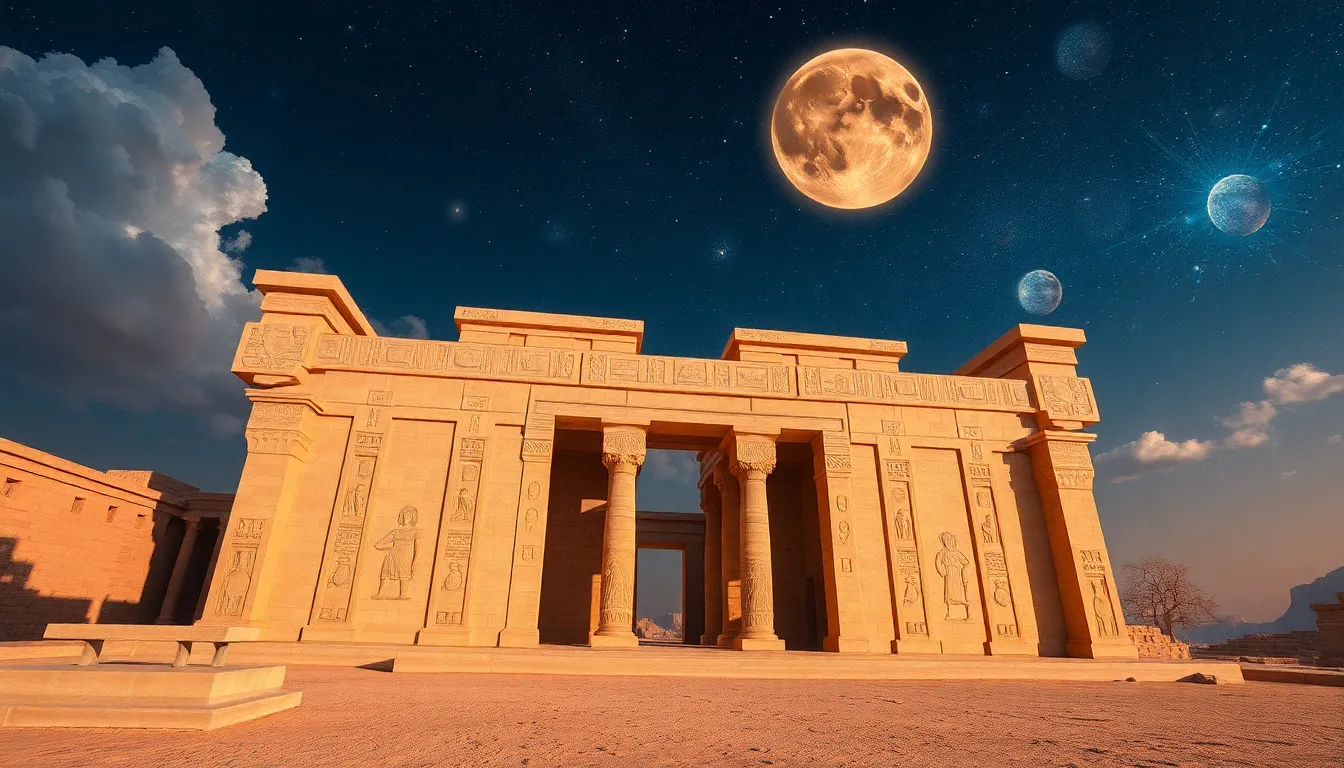The Cosmic Significance of the Temple of Abydos
I. Introduction
The Temple of Abydos, one of the most significant archaeological sites in Egypt, is a testament to the ancient civilization’s profound connection with the cosmos. This sacred site, dedicated primarily to Osiris, the god of the afterlife, reflects the intricate relationship between Egyptian architecture, religion, and cosmic symbolism.
In ancient Egypt, architecture was not merely a practical endeavor; it was imbued with spiritual significance. Temples were designed to align with celestial events, embodying the Egyptians’ understanding of the cosmos and their place within it. This article aims to explore the historical context, architectural features, mythological connections, and modern interpretations of the Temple of Abydos, shedding light on its cosmic significance.
II. Historical Context of Abydos
Abydos was one of the oldest and most important cities in ancient Egypt, situated in the western Nile Valley. It served as a burial site for early pharaohs and was considered the gateway to the afterlife. The city held immense religious significance, being associated with the cult of Osiris and the mysteries of death and resurrection.
Key historical figures linked to the temple include:
- Pharaoh Seti I, who initiated the construction of the grand temple.
- Ramses II, who expanded the temple complex and added impressive carvings.
The Temple of Abydos played a crucial role in ancient Egyptian religion, acting as a pilgrimage site where devotees came to honor Osiris, seek divine favor, and participate in rituals that ensured their passage to the afterlife.
III. Architectural Features of the Temple
The layout of the Temple of Abydos is a marvel of ancient engineering, designed with both functionality and symbolism in mind. It features a series of courtyards, halls, and sanctuaries that guide worshippers through a spiritual journey.
Key architectural features include:
- A grand entrance flanked by massive pylons, symbolizing the threshold between the earthly and divine realms.
- The Hypostyle Hall, adorned with towering columns that create an awe-inspiring atmosphere.
- The sacred well, believed to represent the primordial waters from which creation emerged.
The orientation of the temple is particularly significant, as it aligns with the rising sun and celestial events. This positioning emphasizes the temple’s role as a cosmic link between the earth and the heavens.
Symbolic elements are prevalent throughout the architectural design, with motifs of the lotus and papyrus representing rebirth and the cyclical nature of life and death.
IV. Mythological Connections
Abydos is intimately connected to the myth of Osiris, who was believed to have been buried there. The narratives surrounding Osiris center on themes of death, resurrection, and the afterlife, making Abydos a pilgrimage destination for those seeking to honor the god.
Myths associated with Abydos include:
- The story of Osiris’s murder by his brother Set and his subsequent resurrection by Isis.
- The journey of the soul through the Duat (underworld) to reach Osiris.
The temple served as a central location for rituals that reenacted these myths, reinforcing the beliefs about life after death and the divine order of the universe.
V. Astronomical Alignments
The Temple of Abydos is not only a religious site but also a cosmic observatory. The alignment of the temple with celestial bodies highlights the ancient Egyptians’ sophisticated understanding of astronomy.
Key points of astronomical significance include:
- The temple’s orientation towards the rising sun, symbolizing rebirth and renewal.
- Celestial alignments that correspond with key dates in the Egyptian calendar, such as solstices and equinoxes.
These alignments suggest that the temple was designed to facilitate celestial observations, reinforcing its role in ancient Egyptian cosmology and the belief that the gods governed the stars.
VI. Rituals and Ceremonies
The Temple of Abydos was the site of numerous rituals and ceremonies, each designed to honor Osiris and ensure a favorable afterlife for the deceased. These rituals were deeply intertwined with cosmic beliefs, reflecting the Egyptians’ understanding of the universe.
Notable rituals included:
- The Osiris Mysteries, which involved elaborate reenactments of the Osiris myth.
- Funeral rites for pharaohs, where the deceased were believed to join Osiris in the afterlife.
The annual Osiris festivals were particularly significant, drawing pilgrims from across Egypt who came to participate in the honoring of Osiris and to seek blessings for themselves and their loved ones.
VII. Modern Interpretations and Discoveries
In recent years, archaeological findings at Abydos have provided new insights into its cosmic significance. Discoveries include:
- Artifacts that shed light on the rituals performed at the temple.
- Newly uncovered texts that detail the beliefs and practices of ancient Egyptians regarding the afterlife.
Modern technology, including ground-penetrating radar and digital imaging, has enhanced our understanding of the temple’s layout and purpose. These advancements allow researchers to explore previously inaccessible areas, deepening our appreciation for the ancient Egyptians’ architectural and spiritual ingenuity.
VIII. Conclusion
The Temple of Abydos stands as a monumental symbol of ancient Egyptian cosmology, reflecting the civilization’s profound connection to the cosmos. From its architectural features to its mythological associations, the temple embodies the beliefs and practices that shaped the lives of the ancient Egyptians.
As we reflect on the enduring legacy of the Temple of Abydos, it serves as a reminder of the complexity and richness of ancient Egyptian religion and its cosmic significance. Continued exploration and study of this remarkable site will undoubtedly yield further understanding of the mysteries of ancient Egyptian cosmology.




